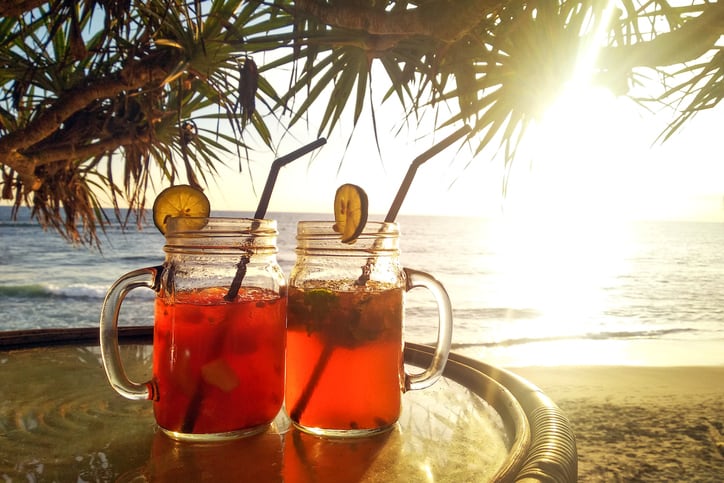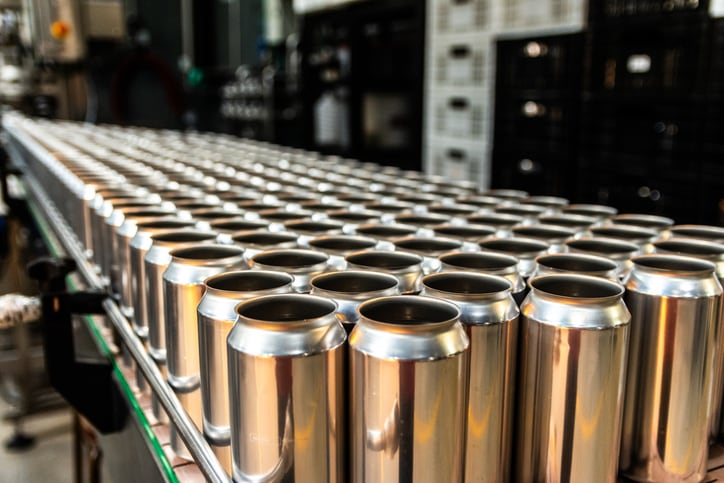For alcohol brands, the tariff upheaval is particularly unsettling: their identity is often based on their country of origin and, as high value goods, can expect a considerable tariff hit. That means they need to be attentive and think creatively about the road ahead.
“The biggest mistake is to freeze and not make the decisions that are required for long-term health,” says Rowena Curlewis, CEO of global drinks brand specialists Denomination.
“Instead, they should use this pause to plan for long-term health: localizing supply chains, strengthening distributor relationships, and building the resilience they’ll need to navigate whatever changes lie ahead.”
Be agile
Curlewis’ first piece of advice is to not sit in a state of wait-and-see.
“Whilst the current situation of overnight changes announced by the US government almost daily is definitely challenging, it is important to remember that this is affecting every business – not just drinks brands.
“Brand owners that are agile and adaptable, but also able to make decisions that enable the brands to move forward, are the ones that will ultimately be successful. If COVID taught us anything, it was those companies that embodied these characteristics that ultimately succeeded.
“Agility and adaptability will depend on the size and structure of your business, and it could mean a number of different things.

“Localizing your supply chain and/or production to minimize import fees, building contingencies into your long-term pricing strategy, strengthening your relationships with key distributors to maintain your local market agility, planning ahead on your packaging and componentry stock to allow for delays and pricing uncertainty, continuing your long-term plans for brand development, and strengthening your digital infrastructure to enable improved modelling and tracking of ongoing disruptions.”
Learn to adapt
So how can brands adapt to high tariff markets?
Curlewis has two top tips. The first is to think outside the box: looking for new markets or sourcing opportunities. But the second is to ensure that the brand’s core identity remains in place throughout any changes.
“If the liquid is not dependent on sourcing from its original Country of Origin (COO), then locally-sourced liquid could be a good alternative,” she said.
“Obviously, some liquid categories will not be able to do this: Bourbon, Tennessee Whiskey, Cognac, Scotch and Irish whisky etc. But brand owners could think about how important the origin is to their story: Guinness is intrinsically Irish with its iconic home in the St. James’s Gate Brewery in Dublin, yet the brand also brews Guinness in several countries around the world to supply local markets more efficiently, without damaging its identification as proudly Irish.
“Controversial I know, but could [Scotch whisky] Johnnie Walker become a Blended American Whiskey, or at least have a range of American Whiskey under the Johnnie Walker brand? “Keep Walking” could take on an entirely new direction.
“Secondly, while tariffs are economic, brand relevance is emotional. Brands can use storytelling to justify a price premium with absolute clarity on their value in drinkers’ lives; tell the product story and educate their audience on the craftsmanship, quality control and provenance stories.
“They could lean into their origin’s appeal e.g., “Crafted in the Scottish Highlands” but tie it to American values like authenticity, quality, and sustainability. For brands selling in the US, doubling down on cultural collaborations with U.S.- based artists, influencers, or local venues.
“This thinking goes beyond product and really celebrates brand experience – at a time when travel, self-expression and self-fulfilment are still seen as worthy investments, creating brand worlds that promise immersive, evocative and inspiring experiences will help secure a brand’s value (and justify any pricing increases) to weather the higher tariffs.
“Thirdly they could pass on the tariff by introducing tiered product lines. That means keeping the hero SKU accessible, while creating premium ranges that are able to absorb higher COGs but in turn deliver higher margin.”
Case study: Penfolds / Treasury Wine Estates
Australian brand Penfolds faced a crisis when China, one of its most important markets, introduced tariffs on Australian wine from 2021-2024.
But the brand responded swifty: not only picking out new markets but thinking carefully about how to be culturally relevant in them.
“One of the reasons Penfolds, and its parent company Treasury Wine Estates, not only survived but thrived during the China tariffs period of 2021-2024, was its ability to pivot to new markets quickly.
“The brand was able to gain distribution in new markets, particularly throughout Central and South East Asia, which they then retained once China re-entered the market," said Curlewis.
“They considered carefully the cultural nuances of the new markets they aimed at, and adapted their communications, product mix and gifting, in order to appeal to these new consumer bases.
“Penfolds also continued their localisation strategy that had started in 2021 with the introduction of the Penfolds California Collection for the US market. In 2022, Penfolds introduced their first China-made wine in China under the One by Penfolds tier. Then in 2023, they launched their first wine in the Chinese Release - CWT 521 Cabernet Sauvignon Marselan.
“Within the traditional Penfolds label design structure, our design team incorporated a Chinese luck knot: a respectful nod to the new COO of the liquid, and a signal of this localisation intent.”
Honesty is the best policy
Brands need to think carefully about the changes they make and how they communicate these to consumers.
“As consumers interrogate the brands they invest in, trust is increasingly hard-earned. Being open and upfront with suppliers, customers and consumers on the measures you’re taking as a brand and business to navigate the turbulence will work to strengthen trust. At the same time, working to highlight any existing weaknesses in your current model will create opportunities for greater efficiencies.”



